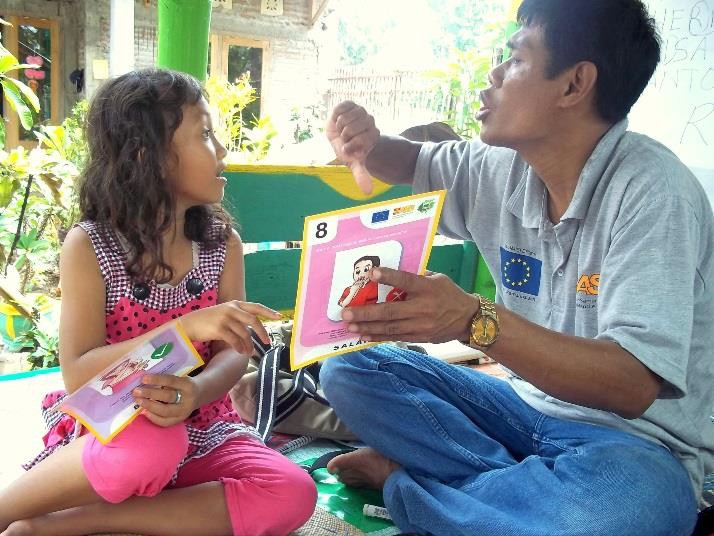98 Learning Difficulties
When children don’t seem to be developing or learning in the typical pattern one might be assessed for a disorder or disability. What is a learning disorder or disability? In the next section we’ll learn about the spectrum of disorders and how they may impact many areas of the child’s life.
- A learning disorder is a classification of disorders in which a person has difficulty learning in a typical manner within one of several domains. Types of learning disorders include difficulties in reading (dyslexia), mathematics (dyscalculia), and writing (dysgraphia). These disorders are diagnosed with certain criteria.
- A learning disability has problems in a specific area or with a specific task or type of activity related to education.
Children with learning challenges are usually identified in school because this is when their academic abilities are being tested, compared, and measured. In the Diagnostic and Statistical Manual of Mental Disorders -DSM-5, a qualified person will make a diagnosis, identified causes, and will make a treatment plan for disorders and disabilities. The diagnosis of specific learning disorder was added to the DSM-5 in 2013.
The DSM does not require that a single domain of difficulty (such as reading, mathematics, or written expression) be identified—instead, it is a single diagnosis that describes a collection of potential difficulties with general academic skills, simply including detailed specifies for the areas of reading, mathematics, and writing. Academic performance must be below average in at least one of these fields, and the symptoms may also interfere with daily life or work. In addition, the learning difficulties cannot be attributed to other sensory, motor, developmental, or neurological disorders.[1]
The following is an example of the DSM-5 – learning disorders.
Learning Disorders:
- Dyslexia – Reading
- Dyscalculia – Mathematics
- Dyspraxia – Motor Coordination
- Dysgraphia – Writing
- Auditory Processing Disorder – Hearing
- Visual Processing Disorder – Visual
Speech and Language Disorders:
- Aphasia – Loss of language – expressive and receptive
- Articulation Disorder – An articulation disorder
- Fluency Disorders – Fluency disorders
- Voice Disorders – Disorders of the voice[2]
Learning Disorders or Disabilities
In this video, a special education teacher defines what specific learning disabilities are, reviews what they are not, and outlines common learning disabilities .
Dyslexia
Dyslexia, sometimes called “reading disorder,” is the most common learning disability; of all students with specific learning disabilities, 70%–80% have deficits in reading. The term “developmental dyslexia” is often used as a catchall term, but researchers assert that dyslexia is just one of several types of reading disabilities. A reading disability can affect any part of the reading process, including word recognition, word decoding, reading speed, prosody (oral reading with expression), and reading comprehension.
Dyscalculia
Dyscalculia is a form of math-related disability that involves difficulties with learning math- related concepts (such as quantity, place value, and time), memorizing math-related facts, organizing numbers, and understanding how problems are organized on the page. Dyscalculics are often referred to as having poor “number sense.”
Dyspraxia
Children who have motor skills substantially below what is expected for their age are diagnosed with dyspraxia – or developmental coordination disorder (DCD) as it is more formally known. They are not lazy, clumsy or unintelligent – in fact, their intellectual ability is in line with the general population – but they do struggle with everyday tasks that require coordination.[3]

Dysgraphia
The term dysgraphia is often used as an overarching term for all disorders of written expression. Individuals with dysgraphia typically show multiple writing-related deficiencies, such as grammatical and punctuation errors within sentences, poor paragraph organization, multiple spelling errors, and excessively poor penmanship.[4]
Auditory Processing Disorder
A processing deficit in the auditory modality that spans multiple processes is auditory processing disorder (APD). To date, APD diagnosis is mostly based on the utilization of speech material. Unfortunately, acceptable non-speech tests that allow differentiation between an actual central hearing disorder and related disorders such as specific language impairments are still not adequately available.
Visual Processing Disorder
Difficulty processing or interpreting visual information is referred to as visual processing disorder (VPD). Kids with visual processing issues may have difficulty telling the difference between two shapes or finding a specific piece of information on a page.[5]
|
Disability |
Difficulties |
Effects |
|
Dyslexia |
Difficulty with reading |
Problems reading, writing, spelling |
|
Dyscalculia |
Difficulty with math |
Problems doing math problems, understanding time, using money |
|
Dyspraxia (Sensory Integration Disorder) |
Difficulty with fine motor skills |
Problems with hand-eye coordination, balance manual dexterity |
|
Dysgraphia |
Difficulty with writing |
Problems with handwriting, spelling, organizing ideas |
|
Auditory Processing Disorder |
Difficulty hearing difference between sounds |
Problems with reading, comprehension, language |
|
Visual Processing Disorder |
Difficulty interpreting visual information |
Problems with reading, math, maps, charts, symbols, pictures |
Speech and Language Disorders
In this video, a certified speech-language pathologist reviews what is meant by speech versus language, outlines common speech and language difficulties, and emphasizes the importance of early intervention.
Aphasia
A loss of the ability to produce or understand language is referred to as aphasia. Without the brain, there would be no language. The human brain has a few areas that are specific to language processing and production. When these areas are damaged or injured, capabilities for speaking or understanding can be lost, a disorder known as aphasia. These areas must function together in order for a person to develop, use, and understand language.
Articulation disorder
An articulation disorder refers to the inability to correctly produce speech sounds (phonemes) because of imprecise placement, timing, pressure, speed, or flow of movement of the lips, tongue, or throat (NIDCD, 2016). Sounds can be substituted, left off, added or changed. These errors may make it hard for people to understand the speaker. They can range from problems with specific sounds, such as lisping to severe impairment in the phonological system. Most children have problems pronouncing words early on while their speech is developing. However, by age three, at least half of what a child says should be understood by a stranger. By age five, a child’s speech should be mostly intelligible. Parents should seek help if by age six the child is still having trouble producing certain sounds. It should be noted that accents are not articulation disorders (Medline Plus, 2016a).
Fluency disorders
Fluency disorders affect the rate of speech. Speech may be labored and slow, or too fast for listeners to follow. The most common fluency disorder is stuttering.
Stuttering is a speech disorder in which sounds, syllables, or words are repeated or last longer than normal. These problems cause a break in the flow of speech, which is called dysfluency (Medline Plus, 2016b). About 5% of young children, aged two-five, will develop some stuttering that may last from several weeks to several years (Medline Plus, 2016c). Approximately 75% of children recover from stuttering. For the remaining 25%, stuttering can persist as a lifelong communication disorder (National Institute on Deafness and other Communication Disorders, NIDCD, 2016). This is called developmental stuttering and is the most common form of stuttering.
Brain injury, and in very rare instances, emotional trauma may be other triggers for developing problems with stuttering. In most cases of developmental stuttering, other family members share the same communication disorder. Researchers have recently identified variants in four genes that are more commonly found in those who stutter (NIDCD, 2016).
Voice disorders
Disorders of the voice involve problems with pitch, loudness, and quality of the voice (American Speech-Language and Hearing Association, 2016). It only becomes a disorder when problems with the voice make the child unintelligible. In children, voice disorders are significantly more prevalent in males than in females. Between 1.4% and 6% of children experience problems with the quality of their voice. Causes can be due to structural abnormalities in the vocal cords and/or larynx, functional factors, such as vocal fatigue from overuse, and in rarer cases psychological factors, such as chronic stress and anxiety.[7]

- Lifespan Development: A Psychological Perspective by Martha Lally and Suzanne Valentine-French is licensed under CC BY-NC-SA 3.0 ↵
- Content by Dawn Rymond is licensed under CC BY 4.0 ↵
- Content by Dawn Rymond is licensed under CC BY 4.0 ↵
- Dyspraxi by The Conversation is licensed under CC BY-ND 4.0 ↵
- Ludwig, A. A., Fuchs, M., Kruse, E., Uhlig, B., Kotz, S. A., & Rübsamen, R. (2014). Auditory processing disorders with and without central auditory discrimination deficits. Journal of the Association for Research in Otolaryngology: JARO, 15(3), 441-64 ↵
- Dyspraxi by The Conversation is licensed under CC BY-ND 4.0 ↵
- Lifespan Development: A Psychological Perspective by Martha Lally and Suzanne Valentine-French is licensed under CC BY-NC-SA 3.0 ↵

